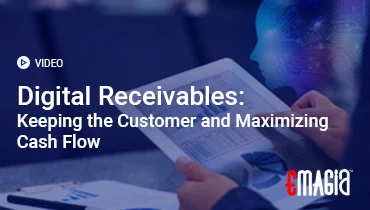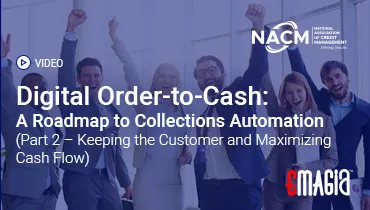Introduction: Understanding Prepaid Expenses as Current Assets
Prepaid expenses often confuse businesses when preparing their balance sheets. But the answer to the common question, “Are prepaid expenses current assets?”, is a clear yes. In this guide, we will break down why prepaid expenses qualify as current assets, how they are treated in accounting, and what this means for your financial reporting.
What Are Prepaid Expenses?
Prepaid expenses are advance payments for goods or services that will be received or consumed in the future. They arise when a company pays for something upfront but benefits from it over time.
Examples include:
- Insurance premiums
- Rent payments
- Subscriptions
- Service contracts
When a company pays for a service upfront, it does not immediately record it as an expense. Instead, it is considered a current asset because it holds value to the business.
Why Are Prepaid Expenses Classified as Current Assets?
The classification of prepaid expenses as current assets is based on timing and benefit:
- Short-Term Use: They will be utilized within the company’s operating cycle or one year, whichever is longer.
- Future Economic Benefit: Prepaid expenses provide future value, meeting the definition of an asset.
Thus, prepaid expenses appear on the balance sheet under current assets until they are consumed.
Common Types of Prepaid Expenses That Are Current Assets
Understanding the common types helps clarify why prepaid expenses are current assets. Typical examples include:
Prepaid Insurance
Insurance policies often require payment upfront. Until the coverage period passes, the premium remains an asset.
Prepaid Rent
Companies often pay rent in advance. The prepaid portion is recorded as a current asset and expensed monthly.
Prepaid Advertising
Large advertising campaigns might require advance payment. These advance payments are treated as current assets until the advertising service is delivered.
Prepaid Subscriptions and Software
Annual subscriptions for magazines, software licenses, or digital services are prepaid assets until the service period elapses.
How Are Prepaid Expenses Recorded in Accounting?
Proper recording of prepaid expenses involves the following accounting entries:
- Initial Payment:
- Debit: Prepaid Expense (Asset)
- Credit: Cash/Bank
- As Time Passes:
- Debit: Expense Account
- Credit: Prepaid Expense
This systematic approach ensures accurate financial reporting and matching of revenues and expenses.
Prepaid Expenses on the Balance Sheet: How They Appear
In financial statements, prepaid expenses are listed under current assets on the balance sheet. They are usually itemized separately or included in a broader “Other Current Assets” category.
Example:
| Assets | Amount |
|---|---|
| Cash | $50,000 |
| Accounts Receivable | $30,000 |
| Prepaid Expenses | $5,000 |
Prepaid Expenses vs. Other Current Assets
While prepaid expenses are current assets, it’s important to differentiate them from other assets:
| Aspect | Prepaid Expenses | Other Current Assets | |:—|:—| | Nature | Advance payments for future goods/services | Cash, accounts receivable, inventory | | Recognition | Expensed over time | Realized or converted to cash |
How Prepaid Expenses Impact Financial Statements
Prepaid expenses affect both:
- The Balance Sheet: As an asset
- The Income Statement: As an expense over time
Mismanagement or misclassification can lead to overstated profits or misleading financial health.
Examples of Prepaid Expenses Entries
Example 1: Prepaid Insurance
A business pays $12,000 for a one-year insurance policy.
- Initial entry:
- Debit Prepaid Insurance $12,000
- Credit Cash $12,000
- Monthly adjustment:
- Debit Insurance Expense $1,000
- Credit Prepaid Insurance $1,000
Example 2: Prepaid Rent
A company pays $6,000 upfront for six months’ rent.
- Initial entry:
- Debit Prepaid Rent $6,000
- Credit Cash $6,000
- Monthly adjustment:
- Debit Rent Expense $1,000
- Credit Prepaid Rent $1,000
Benefits of Properly Managing Prepaid Expenses
Managing prepaid expenses properly offers several benefits:
- Accurate Profit Measurement
- Better Cash Flow Planning
- Improved Financial Transparency
- Compliance with Accounting Standards
Challenges with Prepaid Expenses
Handling prepaid expenses is not without difficulties:
- Complex Adjustments: Especially when periods overlap fiscal years.
- Monitoring Required: To avoid expired or missed adjustments.
- Potential Misclassification: Misleading stakeholders about true financial health.
Accounting Standards Related to Prepaid Expenses
According to:
- GAAP (Generally Accepted Accounting Principles)
- IFRS (International Financial Reporting Standards)
Prepaid expenses must be recorded as current assets and amortized over the period they benefit the business.
How Emagia Can Help Manage Prepaid Expenses Efficiently
Streamline Financial Operations with Emagia’s AI-Driven Platform
Managing prepaid expenses can become complex, especially for large enterprises. Emagia, a leader in AI-powered finance automation, offers solutions that help businesses:
- Automate Prepaid Expense Tracking: Never miss an adjustment entry.
- Ensure Compliance: Stay aligned with GAAP and IFRS standards effortlessly.
- Gain Real-Time Visibility: View asset consumption and expense recognition dynamically.
- Enhance Financial Forecasting: Integrate prepaid asset schedules into cash flow planning.
With Emagia, you transform the tedious management of prepaid expenses into a seamless, automated process.
FAQs About Prepaid Expenses as Current Assets
Are prepaid expenses recorded as assets?
Yes, prepaid expenses are recorded as assets because they provide future economic benefits to the company.
Why are prepaid expenses considered current assets?
They are considered current assets because they will be used or consumed within the operating cycle or within one year.
Where do prepaid expenses go on the balance sheet?
Prepaid expenses appear under the “Current Assets” section of the balance sheet.
Is prepaid rent a current asset?
Yes, prepaid rent is a current asset until the rental period occurs and it is recognized as an expense.
What is the journal entry for prepaid expenses?
The journal entry is: Debit Prepaid Expenses (Asset) and Credit Cash or Bank at the time of payment.
How do prepaid expenses affect income statements?
They affect the income statement by gradually becoming an expense over time through adjusting entries.
What happens if prepaid expenses are not adjusted?
If not adjusted, prepaid expenses can cause assets to be overstated and expenses to be understated, distorting financial reports.
Are prepaid expenses a debit or credit?
Prepaid expenses are initially recorded as a **debit** to an asset account.
Conclusion: Mastering Prepaid Expenses for Smarter Financial Management
Understanding that prepaid expenses are current assets empowers businesses to improve their financial reporting, comply with accounting standards, and make smarter business decisions. Recording, monitoring, and adjusting prepaid expenses properly ensures that your financial statements accurately reflect your company’s economic reality.
By leveraging solutions like Emagia, companies can automate the management of prepaid expenses and focus on growth rather than paperwork.



